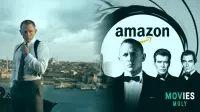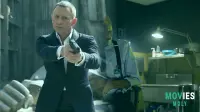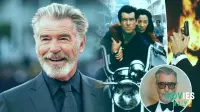Thirty years ago, James Bond was a relic. Then came GoldenEye, a film that defied the odds to redefine 007 for a post-Cold War generation and leave an indelible mark on pop culture.
- GoldenEye, released November 13, 1995, resurrected the James Bond franchise after a six-year hiatus and legal battles.
- Pierce Brosnan debuted as 007, blending classic charm with modern grit, backed by a groundbreaking female M (Judi Dench) and practical stunts.
- The film defied low expectations and a tight budget, becoming a box office hit and inspiring the legendary GoldenEye 007 video game.
Imagine being a teenager in the early 1990s. If someone mentioned "James Bond," your likely response might have been, "Yeah, that's the guy my dad likes." It's not a jab; it's a direct quote from a national research study conducted by MGM-United Artists, revealing a stark truth: James Bond was teetering on the edge of irrelevance. For six long years, after 1989's License to Kill, the iconic spy lay dormant, caught in a web of legal battles and a world rapidly moving past his Cold War charm. But then, on November 13, 1995, Goldeneye exploded onto screens, pulling 007 back from the brink and proving that sometimes, the biggest comeback stories come from the longest odds.
The World Changed, But Bond Hadn't, Or Had He?
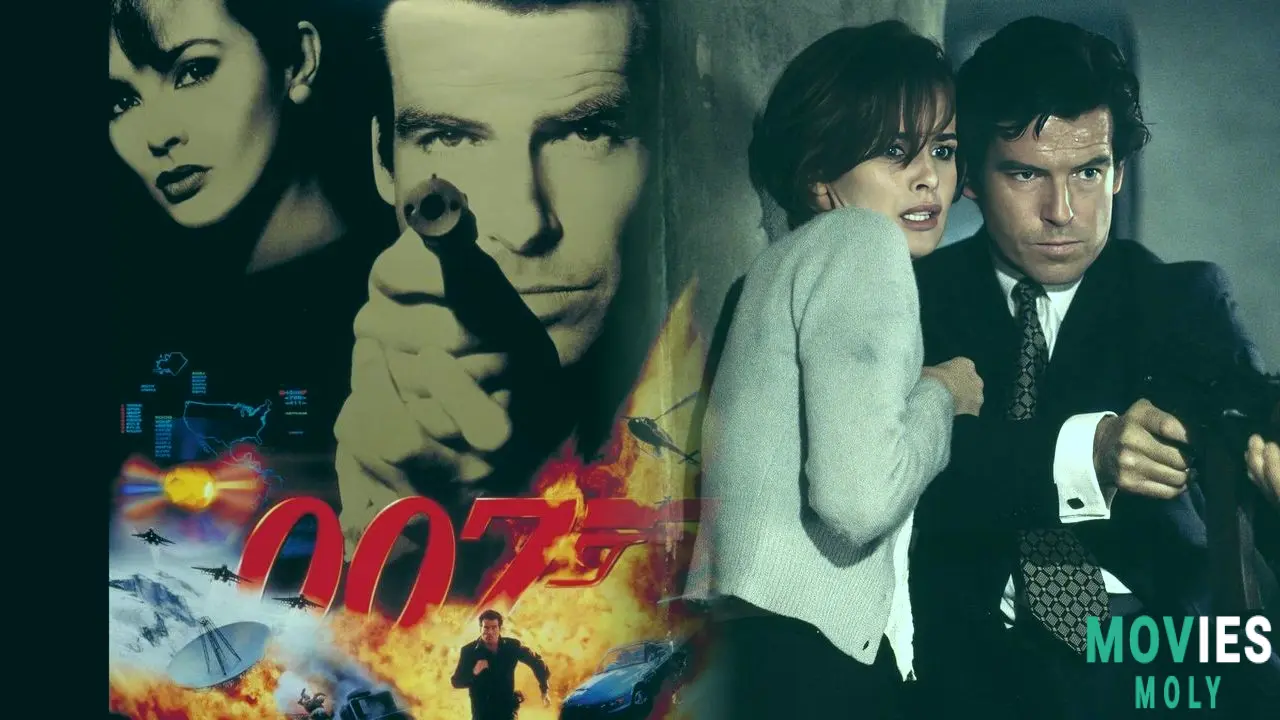
The early '90s were turbulent times for James Bond. MGM, the franchise's distributor, was embroiled in lawsuits, effectively putting any new films on hold until 1991. When the dust settled, the series faced not only financial hurdles but an identity crisis. The Berlin Wall had fallen, the Soviet Union had dissolved, and Bond, a quintessential Cold War hero, suddenly felt adrift. How do you find a purpose for a globe-trotting spy when his primary adversary no longer exists?
This challenge fell largely to a new generation of producers: Barbara Broccoli and Michael G. Wilson, taking the reins from the ailing Albert "Cubby" Broccoli. They faced immense skepticism from MGM president Frank Mancuso Sr., who initially offered a tight $49 million "all-in" budget for the next Bond film, a significant constraint for such a grand-scale production. This forced them to be incredibly resourceful, from finding a director who could stretch every dollar to rethinking the character itself. Source: [Variety, ‘GoldenEye’ at 30: How the 1995 Film Kicked Off Pierce Brosnan’s 007 Era and Reinvented James Bond as a Post-Cold War Hero, November 14, 2025]
Finding the Right Commander to Steer the Ship

With Bond's very existence in question, finding the right director and leading man was paramount. Timothy Dalton, the previous 007, was considered, but the team wanted a clean break. Names like Mel Gibson, Liam Neeson, and Ralph Fiennes were floated, but executive Jeff Kleeman and colleague John Calley had their eyes on Pierce Brosnan. Brosnan had actually been offered the role before Dalton, but his contract for the TV show Remington Steele unexpectedly renewed, forcing him to drop out.
Despite his "TV actor" status and a director with a modest filmography, Martin Campbell, the team pushed hard. Campbell, known for his resourceful action-adventure work on television, recalled simply saying, "Sure, why not," when asked to direct. The ultimate decision on Brosnan came from a quiet but firm tap of Cubby Broccoli's walking stick, declaring, "Let’s make it with Pierce." This was a significant moment, cementing Brosnan as the man to bring Bond into the modern age.
“We had a TV actor who is now playing supporting roles in movies as our James Bond. We had a director who had directed three feature films, all of which flopped. We had a script that even we admit still needed a lot of work. We had one ailing veteran producer in Cubby and two essentially neophyte producers in Barbara and Michael. And we had IP that the research said was very old and rickety and of no interest to the contemporary movie audience.”
— Jeff Kleeman, MGM-United Artists Executive VP at the time, on the initial "package" for GoldenEye.Crafting a Post-Cold War Narrative
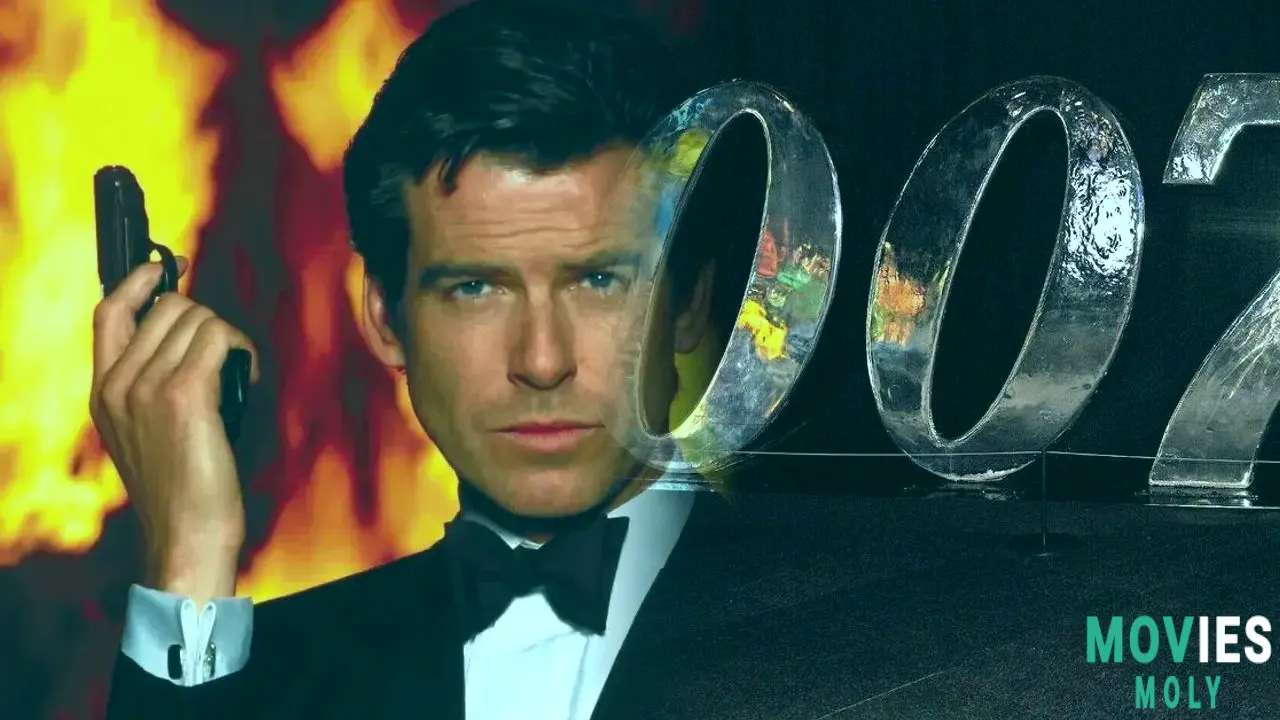
The script itself went through several iterations. Michael France's initial draft was deemed "wall-to-wall action" by the writer himself. Jeffrey Caine performed a "page-one rewrite," structuring the story into three acts. Kevin Wade then refined the "architecture," and finally, Bruce Feirstein was brought in to punch up the dialogue, infusing the mantra: "The world had changed, but Bond hadn’t." This guiding principle allowed Bond to retain his core identity – the smooth, sophisticated, martini-sipping agent – while the world around him reacted differently to his roguish charm.
The story, fittingly, centered on rogue post-Soviet elements. Former MI6 agent Alec Trevelyan (Sean Bean), now known as 006, turns against his country, seeking vengeance for his parents' deaths by using a hijacked satellite weapon called GoldenEye (named after Ian Fleming's Jamaican estate) to cripple Western communication. This villain provided Bond with an adversary who was "physically, intellectually equal to him," as Kleeman described, a dark mirror to 007 himself.
Assembling a Truly Iconic Ensemble Cast
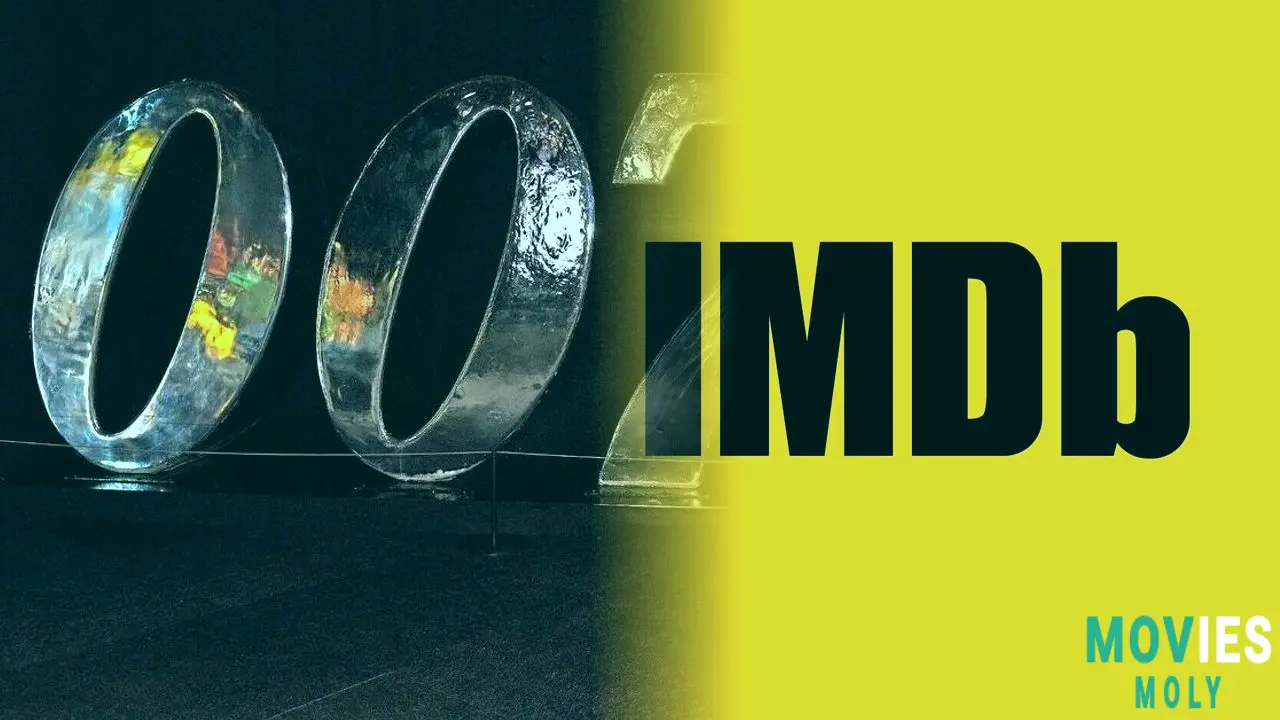
Beyond Brosnan, the casting brought in fresh faces who would become franchise mainstays. Famke Janssen's audition for the lethal Xenia Onatopp was legendary; as Janssen recalled, she "just went for broke" because she had "nothing to lose." Her audacity paid off, delivering an unforgettable, leg-crushing villainess.
Perhaps the most groundbreaking casting was Judi Dench as M. Inspired by Stella Rimington, the first female Director General of MI5, this gender switch brought a new dynamic to Bond's relationship with his superior. Dench's M famously labels Bond a "sexist, misogynist dinosaur" in their first meeting, a line that resonated deeply and signaled a subtle shift in the franchise's awareness of modern sensibilities. She would go on to portray M in seven more Bond films. Source: [Cord Cutters News, 30 Years Ago Today: ‘GoldenEye’ Premiered and Ignited the James Bond Franchise with Pierce Brosnan’s Dashing Debut, November 13, 2025]
Other key cast members included:
- Izabella Scorupco as Natalya Simonova, the smart Russian programmer.
- Samantha Bond as the new Miss Moneypenny.
- Alan Cumming as Boris Grishenko, the quirky tech henchman.
- Robbie Coltrane as Valentin Dmitrovich Zukovsky, the Russian mafioso.
- Desmond Llewelyn, the only returning actor, reprising his role as Q.
Defying Expectations with Practical Stunts and Ingenuity
With filming locations stretching from the Swiss mountains to the Puerto Rican jungle (standing in for Cuba), GoldenEye's 115-116 day shoot was a logistical marvel. Notably, the team had to build a makeshift studio at a former Rolls Royce engine factory in Leavesden outside London, which later became Warner Bros. Studios Leavesden. This ingenuity allowed them to construct massive sets for the film, overcoming the challenge of Pinewood Studios being fully booked.
The film stood out by embracing practical effects at a time when CGI was gaining traction. The thrilling opening bungee jump from the Lago di Vogorno dam in Switzerland, performed by stuntman Wayne Michaels, set the tone. Though directed by second unit director Ian Sharpe, this spectacular sequence deliberately "planted a flag," as Jeff Kleeman put it, showcasing a commitment to "genuine physical effects" over computer-generated ones. Even the intricate miniature work by Derek Meddings, who sadly passed away shortly after the film's release, demonstrated a dedication to tangible spectacle. Source: [Variety, ‘GoldenEye’ at 30: How the 1995 Film Kicked Off Pierce Brosnan’s 007 Era and Reinvented James Bond as a Post-Cold War Hero, November 14, 2025]
Counterpoints and Artistic Choices
While celebrated, GoldenEye wasn't without its critics. Some took issue with the increased product placement, particularly the introduction of the BMW Z3 Roadster, feeling it detracted from Bond's traditional Aston Martin allure. Others, observing Bond's astonishing kill count of 47 in the film (making Brosnan the deadliest Bond on average with 33.75 kills per film), questioned if 007 had become too militaristic or violent. However, proponents argued that this enhanced combat prowess reflected a necessary modernization, adapting Bond for a more action-oriented 90s cinema landscape where characters like Bruce Willis and Arnold Schwarzenegger dominated.
The sheer number of kills, while debated, also directly contributed to one of the film's greatest legacies: the GoldenEye 007 video game. This Nintendo 64 title, released in 1997, revolutionized first-person shooters, particularly with its multiplayer mode, and allowed players to embody Bond's lethal capabilities directly. Without the movie's "unremitting carnage," as one article phrased it, the game might not have achieved its iconic status, introducing Bond to an entirely new generation of fans who experienced the spy's world firsthand through a controller.
From Box Office Triumph to Gaming PhenomenonThe marketing campaign, spearheaded by MGM executive Joe Nimziki and his memorable teaser "You Know the Name, You Know the Number," ignited anticipation. The film premiered to glittering excitement at Radio City Music Hall in New York City on November 13, 1995. The audience's reaction to the opening dam jump, with "people holding their breath," proved that Bond was indeed back.
GoldenEye became a critical and commercial smash, grossing over $350 million worldwide against its initial $60 million budget. This was more than double the take of License to Kill, proving the franchise had a vibrant future. Pierce Brosnan went on to star in three more Bond films, establishing his own memorable tenure.
A Lasting Legacy and a New Crossroads
The film's influence extended far beyond cinema. The GoldenEye 007 video game, selling over 8 million copies, was a cultural phenomenon. As writer Bruce Feirstein humorously recounted, when he tells young people he wrote GoldenEye, they often ask, "The video game or the movie?" and are "disappointed" to hear "the movie," highlighting the game's immense impact on a generation. This digital rebirth ensured Bond remained relevant even to those who hadn't seen the films.
Example: Think of Maya, a high school student born long after GoldenEye premiered. She knows James Bond primarily from her older brother's passionate stories about multiplayer matches on the Nintendo 64, yelling at the TV during intense Golden Gun duels. While she's since watched the movies, her first real connection to 007, his gadgets, and his license to kill, came from the pixelated world inspired by Brosnan's debut.
Today, as GoldenEye celebrates its 30th anniversary, the Bond franchise finds itself at another crossroads. Amazon now owns MGM and the Bond library, and with Daniel Craig's tenure complete, a new 007 awaits. Producers David Heyman and Amy Pascal, with director Denis Villeneuve attached, face the familiar task of reinventing Bond for a dramatically changed world. Just as GoldenEye had to determine Bond's purpose in the 90s, the next film must grapple with who James Bond is today, and what kind of world he'll be saving.
Practical Takeaways for Fellow Film Buffs- Revisit the Classics with Fresh Eyes: GoldenEye is a masterclass in revitalizing a beloved but aging franchise. Watch it and appreciate how it blended tradition with necessary updates.
- Don't Discount the Underdog: The film's success came from an unlikely "package" of talent and a modest budget. It’s a reminder that ingenuity often trumps perceived star power.
- Experience the Cross-Media Impact: If you've only seen the movie or played the game, dive into the other. Understanding their symbiotic relationship reveals a deeper layer of cultural influence.
- Observe the Art of Adaptation: GoldenEye's script faced a massive challenge: how to make a Cold War hero relevant post-Soviet Union. It's a great case study in character evolution.
- Variety, ‘GoldenEye’ at 30: How the 1995 Film Kicked Off Pierce Brosnan’s 007 Era and Reinvented James Bond as a Post-Cold War Hero, November 14, 2025. URL: (Original source indicated for this article, likely internal link)
- Cord Cutters News, 30 Years Ago Today: ‘GoldenEye’ Premiered and Ignited the James Bond Franchise with Pierce Brosnan’s Dashing Debut, November 13, 2025. URL: (Original source indicated for this article, likely internal link)
- MovieWeb, Celebrating its 30th anniversary on November 17, 2025, ‘GoldenEye’ not only marks Pierce Brosnan’s first time playing the charming super spy 007, but it also features James Bond’s highest kill count by a country mile, November 17, 2025. URL: (Original source indicated for this article, likely internal link)
- Daily Express, The James Bond film that reintroduced 007 to a fresh audience is scheduled to air this afternoon - yet certain enthusiasts argue it remains shamefully underappreciated, (No specific date, but references 1995 release). URL: (Original source indicated for this article, likely internal link)




